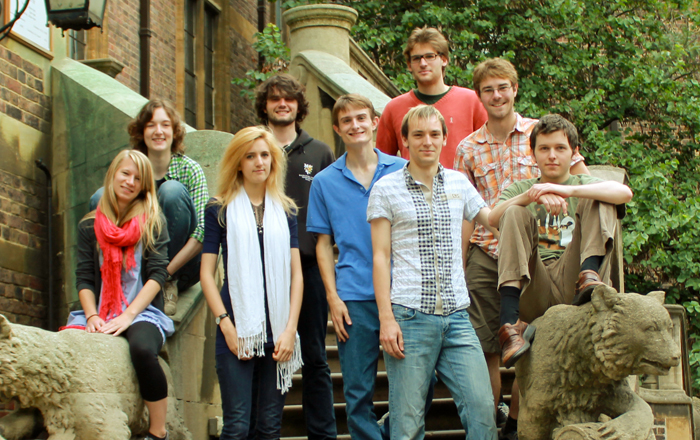Team:Cambridge
From 2010.igem.org

We placed genes from fireflies and bioluminescent bacteria into E.coli. Codon optimisation and single amino acid mutagenesis allowed us to generate bright light output in a range of different colours. Future applications include and quantitative biosensors and biological alternatives to conventional lighting.
If you want a break from hard-core science, check out our Gibson Assembly music video.
You can also see view videos of our bacterial bubble lamp and project overview.

Project Firefly
We are the Cambridge Team for iGEM 2010. Over the course of the summer we have built a number of BioBricks to allow bioluminescence. We used genes originally found in fireflies (Photinus pyralis and Luciola cruciata) and those from the marine bacterium Vibrio fischeri.We adopted a number of strategies to extend the use of firefly luciferase:
- Codon optimisation for increased light output
- Use of a luciferin regenerating enzyme.
- Mutagenesis to create a number of different colours
Project Vibrio
We complemented these firefly systems, which require the addition of the substrate luciferin, with light producing systems from Vibrio fischeri. We believe we have created the first biobrick to emit light in normal E. coli strains without the addition of any luciferin substrate.We codon optimised the bacterial lux operon in an attempt to lift hns repression
These systems will form the basis of simple quantitative assays and in the future might also be used as a light source.
We have also designed a number of software tools to assist synthetic biologists, including a primer design tool for Gibson Assembly.
This page will be updated over the course of the summer as we progress through our project. If you would like to get in touch with us for any reason, please do email us.
 "
"
